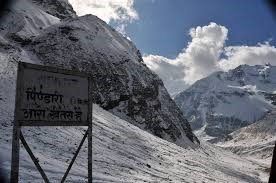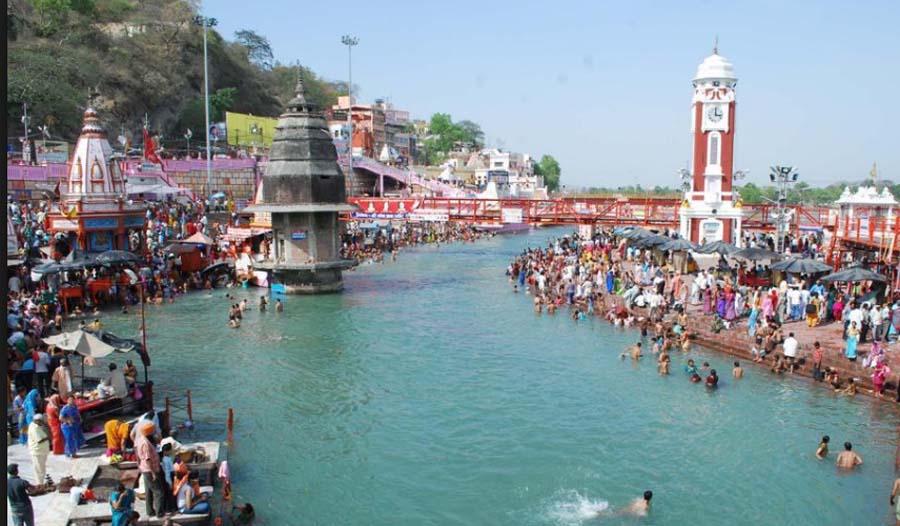
Vanishing Ice: The Alarming Decline of Glacier Area in Uttarakhand
A Long time ago, giving an analogy while standing against one of the last glaciers of Venezuela, the famous journalist and author Elizabeth Kolbert indicated and stated that “A glacier will never look the same again once you understand that it is, in fact, a river of ice." Some days later, that glacier was swallowed by the wrath of Global Warming and some another journalist wrote this-"This Glacier was nature’s time capsule, which stored secrets of our planet’s past for thousands of years and has warned us about the future of this planet." The situation of Venezuela, which became the first country of the world whose all glaciers are now a past, is not just it’s anymore. The Global warming due to Climate Change is affecting the whole globe, where the glacial towers i.e. mountains with glaciers are the ones being most affected. The Hindukush Himalayas in its various sub-parts and ranges, also known as the third pole of the planet earth are also no exception to the continuously depleting ice on its landscape.One of these sub-parts are Uttarakhand Himalayas situated in Uttarakhand, nestled in the Indian Himalayan Region, are also home to numerous glaciers that serve as crucial freshwater reservoirs. These glaciers, including Gangotri, Pindari, Milam, and Sunderdhunga, are the primary sources of major rivers like the Ganges and Yamuna, which sustain millions of people across North India. Besides supporting agriculture and hydropower, they play a vital role in maintaining the region’s delicate ecological balance. However, these glaciers are now rapidly shrinking due to climate change, posing severe threats to water security, biodiversity, and local communities dependent on glacial meltwater.According to a recent research, published in ‘Earth Surface Processes and Landforms’, a peer- reviewed journal, that identified important topographical and morphological causes causing glacier retreat after analysing 116 glaciers in the state's Himalayan range over 23 years, and found that “the Uttarakhand’s total glacier area decreased from 979 sq km in 2000 to 957.6 sq. km in 2023 at an average annual deglaciation rate of 0.095%”.The research, titled "Glacier area variation in Uttarakhand Himalaya: Investigating trends and influencing factors," discovered that Panpatia Glacier lost 2.18 sq. km, while Gangotri Glacier saw the most area loss, dropping by 2.38 sq. km. G27, a smaller glacier, saw the quickest rate of retreat, shrinking "from 0.595 sq. km in 2000 to 0.401 sq. km in 2023, with an annual reduction rate of 1.41%."Iti Shrivas, Supratim Guha, Reet Kamal Tiwari, Mohit Prajapati, and Ashutosh Laxman Taral were the authors of the study, which mapped 979 square kilometers of glacier area, or around 39% of Uttarakhand's glaciated territory. The size of the glaciers under analysis ranges from 0.36 to 118.3 square kilometers. The study found that the main cause of glacier retreat was climate change, and that the Himalayas were more severely affected than the rest of the world. The main causes of glacier melt have been determined to be changing precipitation patterns, air pollution, especially from black carbon accumulation, and rising temperatures. According to the results, elongated glaciers with a higher form index are more stable than compact, circular ones; for every 10% rise in shape index, the rate of glacier loss is reduced by 0.112% annually, highlighting topography, slope, debris cover, and shape index as some of the variables that affect glacier retreat, which is not constant. Glacier surface ice velocity (SIV), a measure of a glacier's speed, was also examined in the study. Up to a threshold of 15 to 20 meters per year, glaciers with higher velocities showed less area loss; above this, the tendency reverses and ice loss rises with velocity.The results from Uttarakhand were consistent with more general patterns seen throughout the Himalayan area. Due to variations in terrain, temperature, and other environmental variables, some locations are showing a quicker retreat than others, according to similar studies that have shown varied rates of glacier loss," the researchers noted. For example, studies conducted in the Upper Alaknanda basin revealed a 6.6% decrease in glaciated area between 1973 and 2020, while research conducted in the Garhwal Himalaya revealed a 1.3% decrease in glacier area between 2001 and 2021.Uttarakhand's glacier area is rapidly decreasing, which is a clear indication of the urgent problems caused by climate change. Local people and the Himalayas' overall ecological balance are at danger due to the effects of the glaciers' rapid retreat, which range from water shortages to an increase in the likelihood of flooding. To prevent greater damage, immediate measures are required, such as more robust climate regulations, responsible tourism, and sustainable conservation initiatives. Millions of people rely on the Himalayan waters for their life, so protecting these essential ice deposits is not simply about protecting the environment. As an overall conclusion, it can be concluded that “The vanishing glaciers of Uttarakhand demand urgent attention, reminding us that the time to act is now, because If we fail to protect these glaciers today, we risk losing the lifelines of tomorrow.”.Climate change is causing a rapid decline in the glacier area in the Uttarakhand Himalayas, a region in India. The Himalayas, including Uttarakhand, are home to numerous glaciers that serve as crucial freshwater reservoirs and support agriculture, hydropower, and maintaining the region's delicate ecological balance. A recent research published in 'Earth Surface Processes and Landforms' found that the total glacier area in Uttarakhand decreased from 979 sq km in 2000 to 957.6 sq. km in 2023 at an average annual deglaciation rate of 0.095%. The main cause of glacier retreat was climate change, with the Himalayas being more severely affected than the rest of the world. The main causes of glacier melt have been determined to be changing precipitation patterns, air pollution, especially from black carbon accumulation, and rising temperatures. Elongated glaciers with a higher form index are more stable than compact, circular ones, and glacier surface ice velocity (SIV) is another variable affecting glacier retreat. Uttarakhand's glacier area is rapidly decreasing, posing urgent problems caused by climate change. Local people and the Himalayas' overall ecological balance are at risk due to the effects of the glaciers' rapid retreat, which range from water shortages to an increase in the likelihood of flooding. To prevent greater damage, immediate measures are required, such as more robust climate regulations, responsible tourism, and sustainable conservation initiatives. Protecting these essential ice deposits is not just about protecting the environment, but also about protecting the lifelines of tomorrow. Climate change is causing a rapid decline in the glacier area in Uttarakhand, a region in the Indian Himalayas. The Himalayas, including Uttarakhand, are home to numerous glaciers that serve as crucial freshwater reservoirs and support agriculture, hydropower, and ecological balance. A recent research found that the total glacier area in Uttarakhand decreased from 979 sq. km in 2000 to 957.6 sq. km in 2023, with an average annual deglaciation rate of 0.095%. The main causes of glacier retreat include changing precipitation patterns, air pollution, and rising temperatures. The vanishing glaciers of Uttarakhand demand urgent attention, as they pose severe threats to water security, biodiversity, and local communities dependent on glacial meltwater.
Reference:-

By: Mr. Harsh Sharma, Research Scholar
05 May, 2025


.png)



